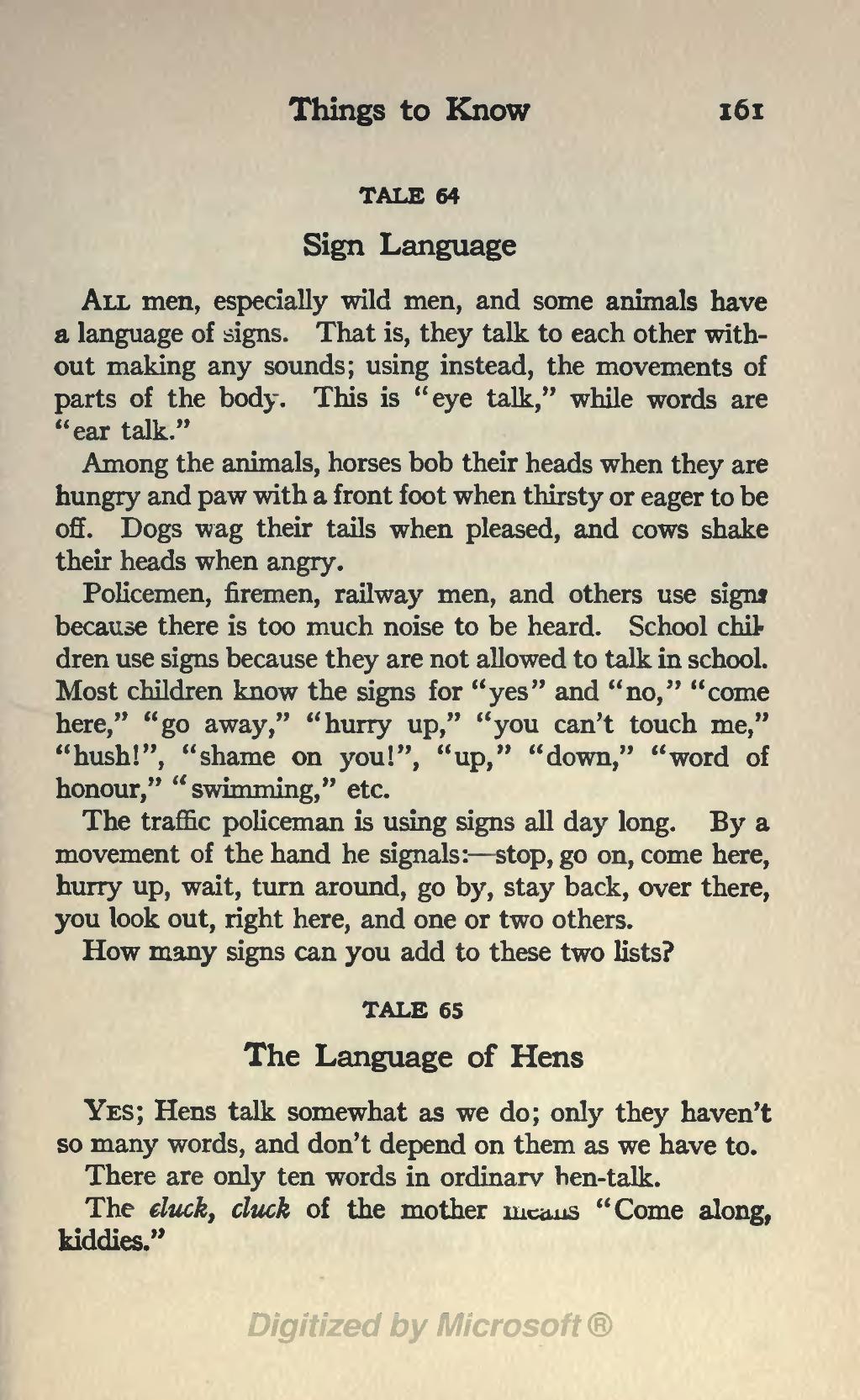Sign Language
All men, especially wild men, and some animals have a language of signs. That is, they talk to each other without making any sounds; using instead, the movements of parts of the body. This is “eye talk”, while words are “ear talk”.
Among the animals, horses bob their heads when they are hungry and paw with a front foot when thirsty or eager to be off. Dogs wag their tails when pleased, and cows shake their heads when angry.
Policemen, firemen, railway men, and others use signs because there is too much noise to be heard. School children use signs because they are not allowed to talk in school. Most children know the signs for “yes” and “no”, “come here”, “go away”, “hurry up”, “you can’t touch me”, “hush!”, “shame on you!”, “up”, “down”, “word of honour”, “swimming”, etc.
The traffic policeman is using signs all day long. By a movement of the hand he signals: — stop, go on, come here, hurry up, wait, turn around, go by, stay back, over there, you look out, right here, and one or two others. How many signs can you add to these two lists?
The Language of Hens
Yes; Hens talk somewhat as we do; only they haven’t so many words, and don’t depend on them as we have to.
There are only ten words in ordinary hen-talk.
The cluck, cluck of the mother means “Come along, kiddies”.
